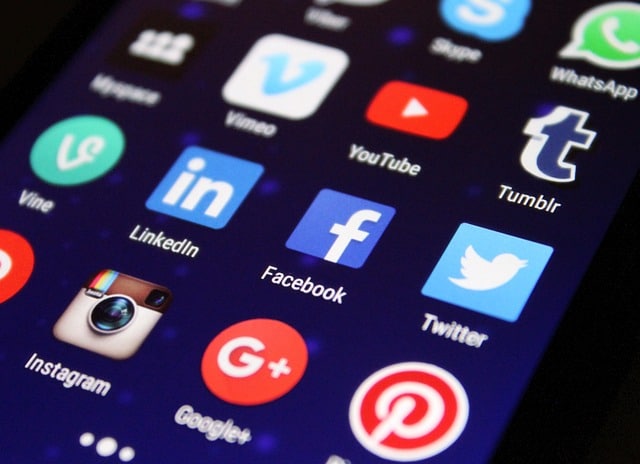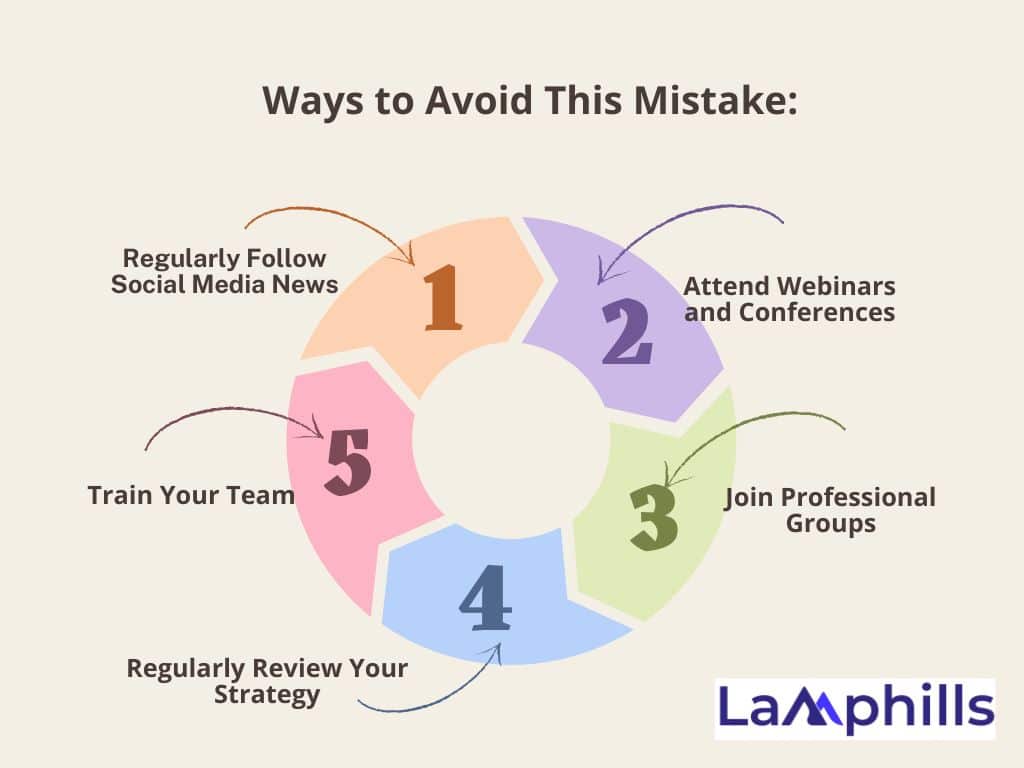Let’s discuss the details of B2B social media marketing strategy, common mistakes, expectations, and how to promote your business effectively.
When it comes to social media for B2B (business-to-business), getting it right can be a game-changer. But making mistakes can be costly, leading to missed opportunities and wasted time.
A few years back, I found myself in a meeting with a very frustrated CEO. We had just concluded what we thought was a great B2B social media campaign for his company. We had carefully planned the content, used eye-catching visuals, and posted at the best times. But after months of effort, the results were disappointing. Engagement was low, we weren’t getting any leads, and the return on investment was embarrassing.
This experience taught me a big lesson. Despite our best efforts, we made several common mistakes that many B2B companies make when using social media.
In this article, we’ll explore the top 10 common social media mistakes businesses make and, more importantly, how to avoid them to build stronger connections and drive accurate results for your business. Let’s get started.
Key Points
- B2B marketing should focus on meaningful interactions and sharing valuable industry knowledge, not emotional appeals or impulse-driven content typically used in B2C strategies.
- Many B2B brands engage in social media without a well-thought-out strategy. A clear plan ensures social media activities align with the company’s larger business goals and effectively track progress.
- Measuring social media’s return on investment (ROI) can be challenging. Social media plays multiple roles in the customer journey and overall marketing strategy, so it’s crucial to recognize its complexity and impact beyond immediate sales.
- High-quality visuals are essential for boosting engagement on social media. Posts with relevant images get significantly more views, likes, and comments, making your content more appealing and effective.
- Simply posting content is not enough. Responding to comments and messages is crucial for building strong relationships and increasing loyalty to your brand.
Understanding B2B Social Media Strategy Mistakes
Social media marketing is a powerful tool for finding new customers, connecting with them, and building strong relationships. It helps you increase brand awareness, reach more people, and build a good reputation and customer loyalty. Having a well-planned social media strategy can boost your business and sales.
B2B and B2C social media marketing are very different. Many B2B businesses are still unsure about the value of social media for their brand. Even those who use it often make the mistake of using a B2C strategy for B2B marketing, but that doesn’t work.
Why? Because they’re using the wrong approach and hiring the wrong experts. Remember, behind every business are real people.
In simple terms, B2B Social Media Strategy Mistakes are common errors businesses make when using social media to connect with other companies. These mistakes can include not knowing your audience well, posting content that doesn’t fit your brand, or not engaging with your followers.
These mistakes can hurt your online presence and reduce your chances of building strong business relationships. Understanding and avoiding these mistakes can create a more effective social media strategy that helps your business grow.
Here’s a checklist to help you review your social media presence, identify areas for improvement, and ensure your efforts bring value to your business.
Now, let’s review some common mistakes and how you can improve.
10+ B2B Social Media Strategy Mistakes and How to Avoid Them
Is your B2B brand just going through the motions on social media? This can hurt your marketing strategy because social media is where customers interact with your brand in real time. It supports your other marketing efforts and is key to the customer’s buying journey.
Unfortunately, there’s no easy way to succeed on social media. The platform is always changing, and there are many pitfalls. Understanding these pitfalls and how to avoid them can help you make the most of social media and build a loyal audience for your B2B brand.
Let’s begin with common mistakes and how you can improve them.
#1. Entrepreneurs overestimate their marketing competence
This exemplifies the Dunning-Kruger effect, where people overestimate their abilities. Some entrepreneurs believe that creating a marketing strategy is simple and that all it takes for social media is hiring someone to make short, eye-catching posts.
This approach leads to poor results. Marketing is one of the most challenging fields, and it’s important to take a professional approach when managing social media.
#2. Avoid using a B2C marketing approach for B2B brands
Emotional posts with eye-catching visuals won’t generate leads for B2B companies.

Image by Freepik
This happens because B2C and B2B strategies are very different. B2C marketing targets emotions and encourages impulse buying, while B2B marketing focuses on logic and problem-solving. For B2B companies, social media should be about meaningful interactions and sharing valuable industry knowledge, like helpful articles, news, and videos. The goal is to provide value and offer solutions.
I accessed the analytics of some companies whose social media pages looked great and were regularly updated by external agencies. However, their social traffic was low and didn’t convert into leads. These brands were wasting money on ineffective strategies, wrong messaging, and the wrong professionals managing their social media.
The reality is that even with tools that increase followers, you might gain many fans but see no business impact. Chasing followers can attract the wrong audience. Instead, focus on getting highly relevant leads. Remember that only about 4% of your followers will see any of your Facebook posts organically.
The more followers you have, the more likely you are to attract people not interested in your business. Stop chasing followers. Focus on creating relevant content and using smart targeting to reach the right prospects.
#3. Not having a clear plan
Many B2B brands invest in social media simply because their competitors do it, not because they have a well-thought-out plan. This “just to be there” approach lacks direction and often focuses on quantity over quality, which is ineffective in the long run.
If you only post to stay active, how will you know if it’s helping your business? Without a clear plan, you can’t see how social media supports your company’s goals. You’ll end up stuck in a cycle where you don’t fully understand social media’s importance and miss out on its benefits.
To get real results from social media, you need to create and document a strategy:
- Outline the goals you want to achieve
- Figure out how to reach those goals
- Set up metrics to track your progress
- Understand how these goals fit into your larger business objectives
- Identify the tools and resources you’ll need to achieve these goals
Without a strategy, you risk wasting resources on activities that don’t matter, and you may struggle to compete with brands that use social media more effectively.
#4. Not being genuine and open
Social media is powerful because it allows brands to connect with customers uniquely. But with that power comes responsibility. In today’s B2B world, people expect honesty—they want brands to be genuine and transparent. With issues like “fake news” and privacy concerns, customers are quick to turn away from dishonest or open brands.
According to a report by Sprout Social, 86% of people are likely to switch to a competitor if a brand isn’t transparent on social media. Additionally, 81% of people believe businesses should be open and honest in their social media posts.
While social media demands a lot from B2B brands, it also offers a chance to stand out. If you want to do something special on social media, be open with your audience. You’ll be surprised at how much they will connect with you in return.
#5. Making It All About You
A common mistake businesses make on social media is focusing too much on their own goals and pushing their message. While promoting your business is part of marketing, it shouldn’t be your only focus on social media.
Social media is about building relationships; for any relationship to work, it must be a two-way street. Your social media efforts will likely fail if you don’t focus on your customers.
Start sharing content your customers want because this will benefit both of you. A good place to start is by looking at what Sprout Social’s 2018 Index Report says about what consumers expect from brands on social media versus what marketers post.
#6. Not Understanding Social Media’s ROI
Understanding social media’s return on investment (ROI) is challenging for brands. Even experts struggle with it—55% of social marketers say measuring ROI is a top challenge. Many brands focus on tracking sales through social media, but only 14% of marketers say they can clearly link revenue to social efforts.
The issue isn’t that social media doesn’t drive sales; it’s that social media impacts various stages of the customer journey, which might not always directly lead to a purchase. Social media is similar to mobile shopping—everyone uses it, but not everyone makes a purchase immediately.
Another factor complicating social media’s ROI is its dependence on other marketing channels and quality content. A successful social strategy requires an integrated approach involving video, design, and other media channels. Companies that invest in these areas tend to have a stronger social media presence. While there are ways to work around these challenges, not investing in these assets will limit your strategy and ROI.
To improve your ROI, recognize that social media is a complex channel that plays multiple roles in the customer journey and overall marketing strategy. Social media ROI will never be straightforward, but understanding its components will help you make better decisions.
#7. Not Investing Enough Time and Effort
Social media success doesn’t happen overnight. Building any relationship requires time and effort, often more than just a few hours. It could take days, months, or even years.
This doesn’t mean you should avoid social media, but you must set realistic expectations. You’ll probably be disappointed if you expect big results from an intern working 25 hours a week. But if you understand that a great social media strategy takes time, the results will eventually show.
#8. Using the Same Content for Every Social Media Platform

Image by Pixelkult from Pixabay
Many companies post the same content on all their social media platforms, but each platform has different types of users, rules, and ways it works.
Let’s look at how the age of users differs on each platform, based on data from Spredfast:
- LinkedIn: 36% are 18-29 years old, 34% are 30-49, and 28% are 50-64.
- Twitter: 36% are 18-29, 23% are 30-49, and 21% are 50-64.
- Facebook: 88% are 18-29, 84% are 30-49, and 72% are 50-64.
- Instagram: 59% are 18-29, 33% are 30-49, and 13% are 50-64.
- Pinterest: 36% are 18-29, 34% are 30-49, and 28% are 50-64.
From this data, it’s clear that different age groups use other platforms. For instance, focus on Facebook and Instagram if you want to reach millennials. As millennials become more influential in business decisions, these platforms could become more important for B2B marketing. Also, the type of content that works well on each platform varies. Videos and photos with emotional or storytelling elements do well on Facebook and Instagram, while Twitter is great for real-time updates, and LinkedIn is ideal for company and job news.
People wouldn’t use multiple platforms if all social networks did the same thing. But each platform offers something different, and that’s why different content works better on other networks. Even the platforms themselves have adjusted their algorithms to match what users expect. To succeed on social media, you must understand what content works best on each platform.
#9. Not Having a Content Plan and Posting Irregularly
Your content plan is key to making your social media marketing successful. Create interesting, well-written content and plan when to post it. Be consistent with your posts, sticking to a regular weekly or monthly schedule.
#10. Overlooking the Importance of Visuals
Our early posts were mostly text and didn’t look very appealing. We didn’t invest in high-quality visuals, which made our content less engaging.
Visuals boost engagement. Using images is not just about shaping your brand; it also makes your content more appealing. On social media, posts with relevant images get 94% more views, likes, and comments than those without images. This is because the right picture catches the attention of users.
#11. Not Engaging with Your Audience
We were so focused on creating content that we forgot to interact with our audience. We didn’t respond to comments or messages, which led to a disengaged community.
If you want your B2B social media content to work, don’t expect that just posting will bring in new customers. You need to engage with your audience. Be social. Respond quickly to messages and comments. Participate in industry-specific groups and connect with your community.
Interacting on social media can be challenging, but it’s also very powerful. In my experience, a negative comment from a former client on LinkedIn helped us gain several leads from top companies. By responding thoughtfully, acknowledging past mistakes, and showing how we’ve improved, we were able to turn the situation around. Even that same client eventually returned to us because we sparked their interest again.
Engagement is a two-way street. Respond to comments, answer questions, and join in conversations. I found that simply interacting with our audience helped build stronger relationships and increased loyalty to our brand.
#12. Not Watching What Competitors Are Doing
At first, we were so focused on our content that we didn’t notice what our competitors were doing. This was a missed chance to learn from their successes and avoid mistakes.
Keep an eye on your competitors’ social media activities. See what works for them and what doesn’t, and use this information to improve your strategy. When we started doing this, we gained valuable insights that helped us do better than our competitors.
#13. Not Keeping Up with Changes on Social Media Platforms
One of the biggest reasons brands struggle with social media is that they don’t update their strategies as social platforms evolve. Social media changes fast, and so do the ways people use it. You’ll fall behind if you don’t adjust your tactics to match how users interact with each network.

To avoid this, keep up with the latest trends and best practices. Though it might seem overwhelming, it’s necessary. Here are a few tips to help you stay informed:
- Regularly Follow Social Media News: Subscribe to industry blogs and newsletters, or follow social media experts to stay updated on the latest changes.
- Attend Webinars and Conferences: Participate in online events or conferences where experts discuss the latest trends and updates in social media.
- Join Professional Groups: Engage in online communities or forums where professionals share insights and updates about social media.
- Regularly Review Your Strategy: Set aside time to review your social media strategy every few months, ensuring it aligns with the latest platform updates and trends.
- Train Your Team: Ensure your team is knowledgeable about new features and changes by providing regular training or access to resources.
Staying informed will help you turn your knowledge into practical action.
Final Thoughts
B2B social media takes time and patience to build trust and relationships with your audience. It usually takes a while to see results. Just clicking on an ad or reading one of your posts probably won’t make someone submit a request right away.
Please note that B2B purchases are usually not based on emotions or made on the spot, and a team often makes the decision.
However, social media is a great way to keep potential customers interested. They see your posts, gather information, research your company, and talk to colleagues before deciding. This process follows a typical marketing funnel: awareness, interest, desire, and action. It takes time for a B2B prospect to take action, so it’s important to post and engage with your target community regularly.
FREQUENTLY ASKED QUESTIONS
What is a B2B social media strategy?
B2B social media marketing uses social media platforms to promote products or services to other businesses. The goal is to use social content to build relationships with other businesses, leading to more leads and sales.
Which social media is best for B2B?
LinkedIn, Facebook, and Instagram work best for B2B social media. LinkedIn is the top choice for getting more traffic and leads. Instagram, YouTube, and TikTok are great for connecting younger audiences and boosting brand engagement with visual and video content.
How do you create a stronger B2B social media strategy?
Your B2B social media content should be helpful to your audience. It should make their work easier, solve problems, and provide useful tips or information. You can share educational content like industry reports, trend updates, or step-by-step guides.
What’s the most annoying thing brands do on social media?
The Most Annoying Things Brands Do on Social Media
According to survey respondents, the most annoying things companies do on social media are posting too often (57.5%), using too much slang or jargon (38.4%), lacking personality (34.7%), trying to be funny but failing (32.3%), and not responding to messages (24.7%).
What makes B2B social media successful?
Successful B2B social media marketing focuses on getting people involved using visuals and posting regularly. It also helps build a strong brand image and reputation, making connecting with potential clients and other businesses easier for lasting relationships.
Similar Articles
What is B2B PR? How it Works and What to Expect from a B2B Public Relations Agency
Mastering B2B Online Marketing: Strategies, Trends, and Insights
7 Proven B2B Digital Marketing Strategies for Business Growth (+ Top Agencies)






